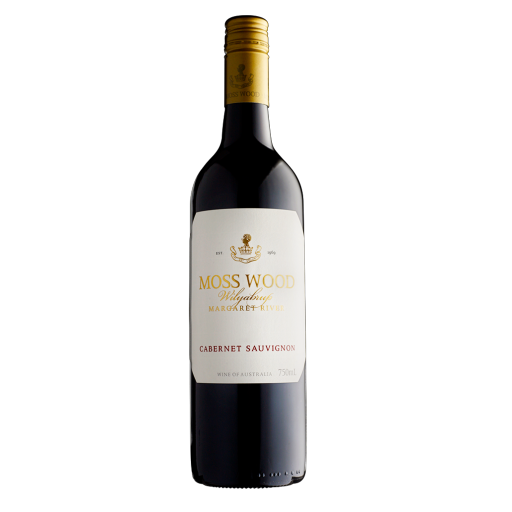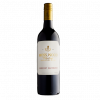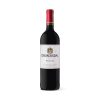Moss Wood Cabernet Sauvignon 2018
Original price was: £65.95.£59.95Current price is: £59.95. incl. VAT
2 in stock
TASTING NOTES
COLOUR AND CONDITION
Youthful, dense ruby hue; bright condition.
NOSE
This is one of the more ethereal Cabernet Sauvignons we have released. It combines both freshness, with the attendant perfumes of raspberries, roses and violets, and ripeness, featuring classic blueberry and red currant aromas, all courtesy of the terrific growing season. Behind these are the typical varietal complexities produced by long term barrel age including tar, wax, cedar, chocolate, mixed spices and tobacco. They all combine to give a volume seen only in the great years.
PALATE
Expectations are high after such a promising nose and the same impact is immediately evident. A series of flavours flow across the palate, including blueberry, cranberry, red currant and liquorice, almost taking us back to the future with memories of the opulence of 1976, combined with the complexity of 2005. The structure is in the well-balanced Moss Wood mode, with full body, fresh acidity and soft tannins, with a touch of toasty oak, chocolate and cloves on the finish.
CELLARING
We enthusiastically recommend this wine for cellaring. It has the concentration and complexity to age gracefully for decades. However, there will be a dilemma to wrestle with in the short term because the fruit generosity and balance are such that it is very drinkable now. Our best advice is for those who are keen to cellar it and enjoy older wine, it should be kept for at least 10 years and by which time it will be showing some of its complex bottle bouquet and the structure will be starting to soften. However, full maturity is unlikely to be reached before 25 years of age and it should last for several decades beyond that.
VINTAGE NOTES
In the eyes of the Mugford family, Keith is the resident nerd. Any Dads reading this will no doubt understand how proud this makes him feel. In fact, while admitting to nerd-like tendencies, mostly he obsesses about the weather, especially during the growing season. It comes up in conversation at Moss Wood a lot and which is hardly a surprise when considering how much is riding on it. We can illustrate this in two ways.
In order to keep the vineyard safe from fungal disease, we monitor the weather to decide how and what treatments we should use. For example, our primary cover comes from Sulphur, a topical treatment for powdery mildew, that washes off with too much rain. We have to keep a close eye on the amount and timing of precipitation and if we get too much, reapply a treatment, even if only a few days have passed since the last.
Another way of understanding the focus on the weather is to consider temperature and how its fluctuations affect us. In the end, the fundamental quality of the wines we make, from any variety, is entirely dependent on how well the grapes ripened and which is a direct result of the daily temperatures we receive.
We look back fondly at our early vintages and marvel at the innocence of the time. Of course, we tried hard to make the best wine we could but we knew so little about what we were dealing with. Each year was a new adventure and we sailed blindly into it, with very limited experience to use as a guide as to what quality and style we might expect. Of course, we had the excellent modelling by Dr John Gladstones, who’s work showed we could anticipate good quality in an average Margaret River season but that was nothing like the detailed understanding of the vineyard we have today.
With 48 vintages at Moss Wood under the belt, we now approach each season with clearer ideas. We monitor the vine growth stages and temperatures and can gain significant insight into what style of wine we might be heading for and what management techniques we can apply to give the best outcomes. It’s a lot different to the old days and no wonder we are obsessed by it.
There is, however, a delicious irony (bad pun used yet again). No matter what we know about the season we’ve experienced to date, we can never know beyond a day or so what the future holds. We’re never as smart as we think we are because Mother Nature loves to deal us wild cards. It’s the game we’re in. It is said the price of Liberty is eternal vigilance and this has been re-worked in the name of many causes so perhaps we could fashion it into a viticultural statement that the price of high-quality wine is eternal vigilance?
If we were lucky enough to be able to order up our growing seasons, we’d go to that web page and click on 2017-18 just about every time, although we’d probably hesitate over 2000-01 for a moment or two. It would be a tough choice deciding which of the two was better and since we’re talking nerdy stuff, let’s make the comparison. The mighty 2001 enjoyed a season where the average temperature was 19.4°C, and Cabernet Sauvignon took 126 days to ripen to 13.5°Baume, receiving 1210 hours between 18-28°C. The 2018’s numbers were 128 days to achieve 13.6° Baume, after 1197 hours. To give some idea of how similar these are, the average temperatures can vary between 18.7-21.1°C, days vary between 100-130 days and hours between 1000 and 1250. As an aside, these numbers might provide an insight into why Moss Wood Cabernet Sauvignon wines taste similar but never exactly the same.
For consumers, it’s what’s in the glass that matters and the same is true for us. As much as there is some wonderful consistency between those two years, when we decide on the picking time for any variety, it is always based on the flavours in the grapes. By monitoring the seasonal conditions, we were hopeful there would be exciting quality in 2018 because the temperature comparison with 2001 told us so. However, we made the decision to harvest when the flavour profile was at its best not when the numbers lined up, although we can see it’s no coincidence.
All this to tell you the 2018 growing season is one of the very best. We received above average rainfall for 2017 and to keep the vines well-watered, 267mm fell during the growing season, including a very handy 25mm in early February. Flowering conditions were largely benign, without serious interruption by heavy rain or low temperatures. There were no problems with disease and we kept hungry birds at bay by applying our nets. This meant yields were good with Cabernet Sauvignon up 18%, to 8.67 tonnes per hectare and Petit Verdot up 9% to 6.06 tonnes per hectare. Cabernet Franc let the side down slightly, with a yield reduction of 11% to 5.21 tonnes per hectare. Each variety marched comfortably through to ripeness on or a day or so later than average.
PRODUCTION NOTES
Having got to this point, readers may be asking themselves did we get the job done properly in the winery? Fortunately, the answer is yes. As is so often the case with the great years, the wine essentially made itself. For all 3 varieties, after hand picking and sorting, the destemmed fruit was put into small open tanks, seeded for fermentation with multiple yeast strains and hand plunged 3 times per day. Skin contact was a very typical 2 weeks, after which the wine was pressed to stainless steel tank for malolactic fermentation. Upon completion, each batch was racked to 228 litre French oak barrels, where it stayed for 30 months.
In October 2020 all barrels were racked and blended in stainless steel and the final blend consists of 92% Cabernet Sauvignon, 4% Petit Verdot and 4% Cabernet Franc. Fining trials were carried out and it was no surprise that none of the agents improved the tannin balance, so the wine remained unfined. It was then sterile filtered and bottled on 2nd November, 2020.



